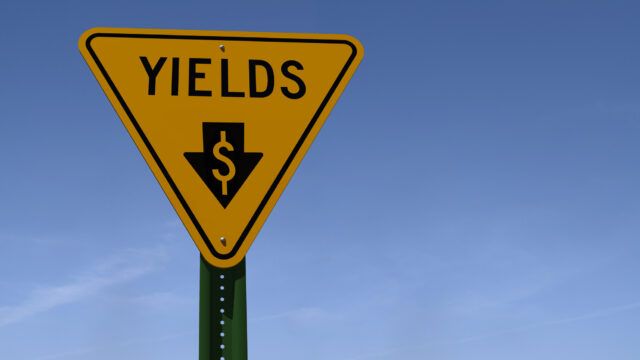The brief inversion of the yield curve spooked stock markets, bringing to an end the short rally they had enjoyed since mid-March. This phenomenon – where the cost of short-term government debt spikes above that of longer-dated debt – has been a relatively accurate predictor of recession on an 18-month view across much of history.
The yield curve is usually positive – the cost of short-term debt is lower than for long-term debt because of all the usual elements, such as the time value of money, inflation and so on. When the yield curve inverts, it suggests that the market believes central banks will have to raise rates in the short-term but drop them again quickly because the economy is poised to weaken.
There are mounting fears over recession. Deutsche Bank was one of the first groups to suggest that a US recession was a significant possibility in 2023, as inflation and interest rates weaken consumer and corporate spending. The group said rising rates would “trigger a mild recession around late 2023. While this will eventually help to push inflation closer to target by the end of 2024, it will also come with a sharp rise in the unemployment rate”.
Economic growth expected to ease
Is this view universally held? Certainly, says Anthony Willis, investment manager on the BMO GAM multi-manager team, there are signals that the US economy is weakening. He says: “While financial conditions are reasonably benign overall, we are expecting some significant rate hikes over the next year. When combined with the liquidity withdrawal (as quantitative easing is reversed), we are expecting economic growth to ease quite significantly.”
He says it is also worth bearing in mind the rising oil price: “Oil may not be as critical to the global economy as it was in the 1970s, but oil at over $100 a barrel is still a brake on global growth.” The Federal Reserve remains committed to its hiking cycle even in the face of a cost of living squeeze.
Part of the problem is that rate rises seldom achieve their ends elegantly. Willis adds: “There is a belief that the Fed can deliver just the right amount of interest rate hikes to keep inflation down without causing recession, but that’s very hard to do and history is a useful guide. We’ve had 12 hiking cycles since World War Two, nine of them have ended with recession. The ‘soft landing’ scenario requires a lot of faith that the Federal Reserve can tighten policy just enough so that growth doesn’t drop below the line.”
Yield curve inversion’s Cassandra-like quality
Nevertheless, many economists still believe that the US economy may side-step recession. Part of the reason could be that the Federal Reserve is aware of the yield curve problem and will be factoring it into its decision-making.
Ken Leech, chief investment officer at Western Asset Management, says: “We believe the Federal Reserve will be very attentive as it moves forward. Yield curve flattening is a yellow flag, leaning towards red. One of the implications is that the Fed may be able to slow down the rate of increases as the year goes on. It recognises that the challenge to real disposable income is very acute.”
The minutes from the latest Federal Reserve meeting (where it raised rates) show that there is a divergence of opinion. The committee may have raised rates more had it not been unsettled by the problems in Ukraine. Leech adds: “There is still some diversity of opinion and there are doves pointing out that there are uncertainties on growth and geopolitics that suggest some caution on rate hikes.
“This is the first time we’ve seen this aggressive curve flattening before the Federal Reserve has even really started on rate hikes. [Fed chair Jerome] Powell has said that it looks at the yield curve carefully and knows that if it flattens, the Fed might have to cut rates going forward.”
Nevertheless, Leech admits that the yield curve inversion has a Cassandra like quality – it’s always right, but it’s never believed – even though it’s proved a strong indicator over time.
Optimists might also suggest that the interventions in bond markets over the past decade will produce some anomalous results. There is a lot of money in motion, which may mean that signals like this are less helpful than they used to be. However, there are other groups, such as CrossBorder Capital, that say exactly the opposite – lots of money in motion means that bond markets are more predictive of economic activity.
The place to be when the hiking cycle ends
Whether or not the yield curve inversion proves predictive, it shouldn’t send equity investors running for cover. Willis points out that equity markets usually keep on moving higher for some time.
He adds: “Even if yield curves invert, they know they have some time left, so the party continues for a little while. But they tend to struggle when recession arrives.” If recession does materialise, it could be well into 2023 before it arrives.
For fixed income markets, it may be more complex. Willis says: “Bonds will struggle at this stage of the cycle, but once the hiking cycle ends, that’s the point when bonds are the place to be.”
The global economy is certainly at a difficult juncture. At the moment, it has relatively easy comparison figures and the tailwind of the reopening after the pandemic. However, as flattering base numbers fall away and the impact of the Ukrainian crisis is felt in the global economy, there could be tougher times, even recession, ahead.

















